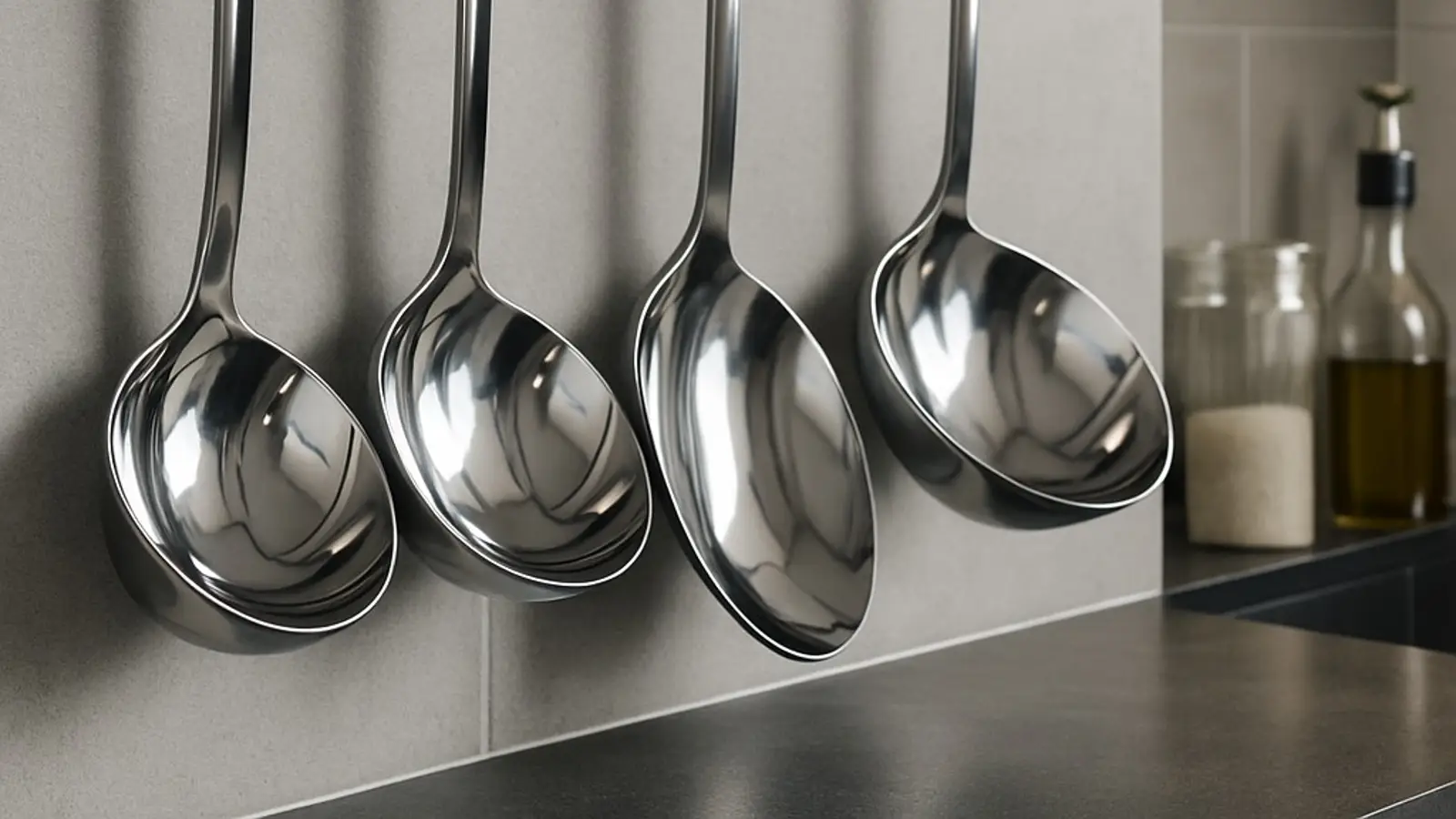https://boda.su/en/posts/id337-safe-kitchen-tools-stainless-steel-vs-other-materials
Safe Kitchen Tools: Stainless Steel vs Other Materials
Safe Kitchen Tools Guide: Stainless Steel, Aluminum, Nonstick, Wood, Plastic
Safe Kitchen Tools: Stainless Steel vs Other Materials
Learn which kitchen tool materials are safest: stainless steel, food-grade aluminum, nonstick care, wood care, and why plastic can risk your health too.
2025-09-15T14:05:18+03:00
2025-09-15T14:05:18+03:00
2025-09-15T14:05:18+03:00
Refreshing your kitchen—new tools, new recipes—always feels good. Beyond looks and convenience, though, safety matters. Picking the right materials helps your cookware last and supports the health of everyone at your table.
Why Material Matters
The quality of kitchen gear affects both cooking results and well-being. The wrong material can harbor bacteria or release harmful substances on contact with food. If you spot chips, cracks, or other damage, it’s a signal to replace the item.
Stainless Steel: The Reliable Choice
Among the options, stainless steel stands out. It’s durable, resistant to damage, and safe for food preparation. It doesn’t react with ingredients, won’t alter flavors, and does not release toxic compounds.
Alternatives and What to Know
Food-grade aluminum. A solid option, though less popular than stainless steel. The key is to make sure it’s truly food-grade and built to last.
Nonstick (Teflon) coating. Useful and convenient, but it calls for gentle handling and wooden or other non-scratching utensils. Care is essential to avoid scuffs and damage to the coating.
Wooden tools. They need attentive care so they don’t become a source of bacteria or fungi. Check them regularly for damage and dry thoroughly after each use.
Plastic Has No Place in the Kitchen
Plastic tools and containers may be handy and colorful, but high heat turns them into a health risk. Toxins can leach into food—unacceptable for anyone focused on safe eating.
The takeaway: Put safety first when choosing kitchen tools. Stainless steel remains the top pick for those who value quality and longevity. Pay attention to build quality, replace damaged items, and cook with confidence.
Safe Kitchen Tools, Stainless Steel, Food-Grade Aluminum, Nonstick Care, Teflon Coating, Wooden Utensils, Plastic Risks, Kitchen Safety, Cookware Materials, Food Safety
2025
articles
Safe Kitchen Tools Guide: Stainless Steel, Aluminum, Nonstick, Wood, Plastic
Learn which kitchen tool materials are safest: stainless steel, food-grade aluminum, nonstick care, wood care, and why plastic can risk your health too.
Generated by Dall-e
Refreshing your kitchen—new tools, new recipes—always feels good. Beyond looks and convenience, though, safety matters. Picking the right materials helps your cookware last and supports the health of everyone at your table.
Why Material Matters
The quality of kitchen gear affects both cooking results and well-being. The wrong material can harbor bacteria or release harmful substances on contact with food. If you spot chips, cracks, or other damage, it’s a signal to replace the item.
Stainless Steel: The Reliable Choice
Among the options, stainless steel stands out. It’s durable, resistant to damage, and safe for food preparation. It doesn’t react with ingredients, won’t alter flavors, and does not release toxic compounds.
Alternatives and What to Know
- Food-grade aluminum. A solid option, though less popular than stainless steel. The key is to make sure it’s truly food-grade and built to last.
- Nonstick (Teflon) coating. Useful and convenient, but it calls for gentle handling and wooden or other non-scratching utensils. Care is essential to avoid scuffs and damage to the coating.
- Wooden tools. They need attentive care so they don’t become a source of bacteria or fungi. Check them regularly for damage and dry thoroughly after each use.
Plastic Has No Place in the Kitchen
Plastic tools and containers may be handy and colorful, but high heat turns them into a health risk. Toxins can leach into food—unacceptable for anyone focused on safe eating.
The takeaway: Put safety first when choosing kitchen tools. Stainless steel remains the top pick for those who value quality and longevity. Pay attention to build quality, replace damaged items, and cook with confidence.

